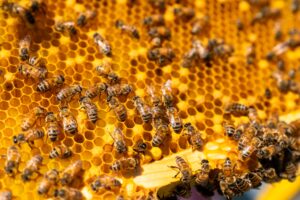The latest health guidelines say the sooner, the better when it comes to introducing allergenic foods such as peanuts.
UK research has revealed babies with a high risk of developing a peanut allergy are 80% less likely to develop allergic reactions if fed peanuts before they are 12 months old, compared with waiting until they turn five.
But many anxious parents continue to stall when it comes to feeding their babies peanuts for the first time.
Such parents can breathe easier next year. New ‘peanut clinics’ will enable parents of ‘high risk’ children to feed peanuts to their child under the watchful eye of health staff.
FOR PARENTS OF ‘HIGH RISK’ CHILDREN
Babies with other food allergies, eczema, or a strong family history of allergies are defined as high risk.
Doctors hope the clinics will encourage more parents to offer age-appropriate foods containing peanuts to their children before they’re 12 months old.
Child and Adolescent Health Service consultant immunologist Dr Michael O’Sullivan says only 30% of Australian parents offer peanuts to their children before they turn one.
“There is now compelling evidence that starting such foods at a young age can make a big difference,” Michael says.

“But there’s an understandable concern among parents about giving peanut butter or other foods containing peanuts to their children before they are one.
“We have parents who drive to be nearby the hospital when offering peanut for the first time, or who go and sit outside their local GP practice in case something happens.
“The clinic will show a safe and effective way to introduce peanuts for the first time.
“We want to encourage more parents to introduce these foods earlier. This will reduce the chances of kids developing allergies later on.”
Such advice flies in the face of traditional thinking. In the past, health experts advised parents not to feed their children high allergy foods like eggs, peanuts and seafood until they were two or three years old.
But under that advice, rates of peanut allergies continued to soar.
CLINICS OPENING IN PERTH IN APRIL
The clinics will open at Princess Margaret and Fiona Stanley hospitals in April, supported by a Research Translation Project grant from the WA Department of Health. Michael expects 400 children to attend in 12 months. The clinics may then be extended to other hospitals and GP practices.
Parents and health care staff will watch for tell-tale signs of allergies such as swelling of the lips, eyes or face, hives, welts and vomiting, or in rare severe cases signs of anaphylaxis including coughing, difficult or noisy breathing, or appearing pale or floppy.







